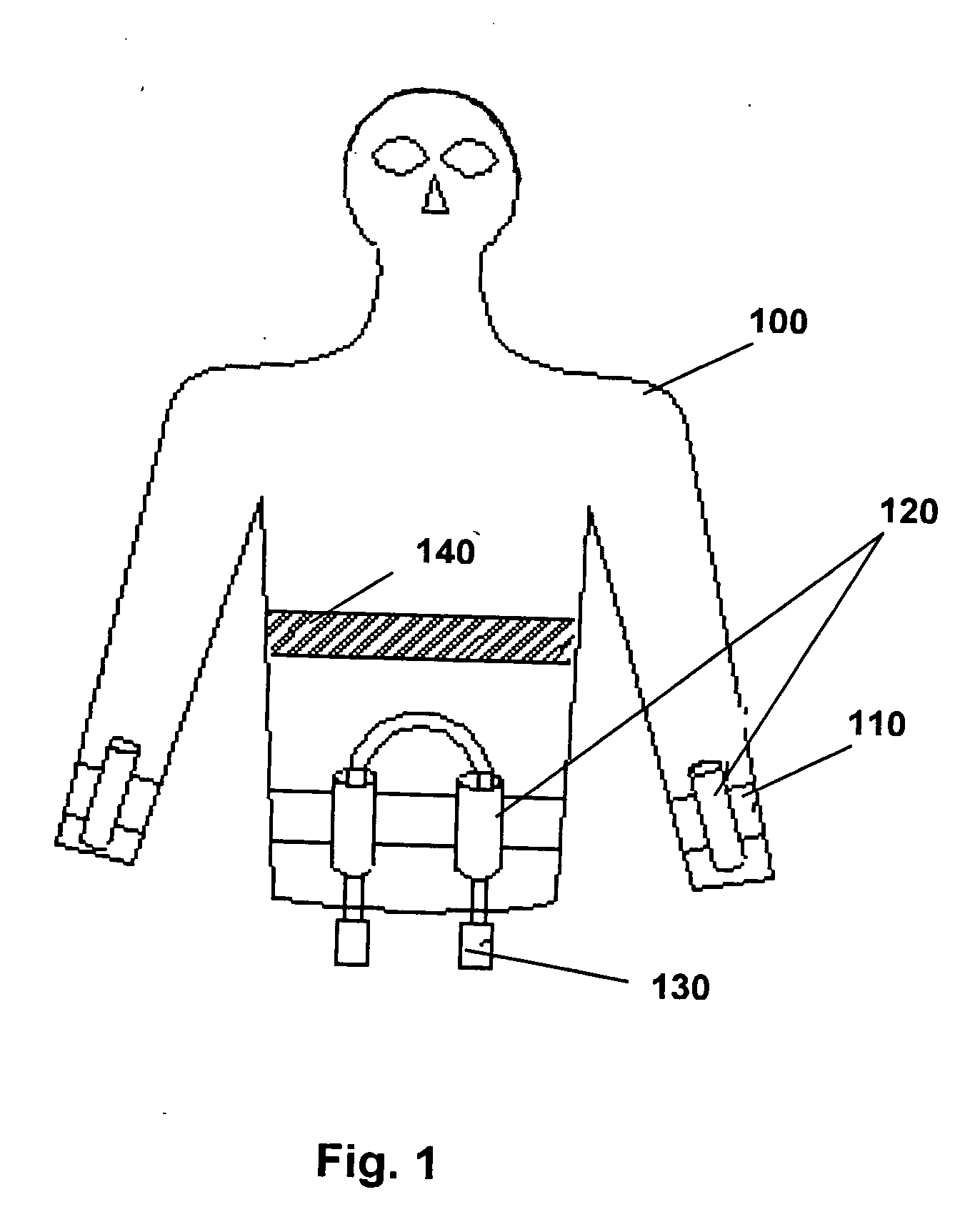System for creating artificial gravity conditions in micro and hypogravity environments
a technology of artificial gravity and environment, applied in the field of space travel, can solve the problems of affecting the physiological response of the human body, altering biological processes, and affecting the recovery time of astronauts,
- Summary
- Abstract
- Description
- Claims
- Application Information
AI Technical Summary
Benefits of technology
Problems solved by technology
Method used
Image
Examples
Embodiment Construction
[0024]FIG. 1 is a sketch of the illustrative embodiment of the present invention. The embodiment consists of a space suit 100 that covers the upper torso of the astronaut—from the top of his head to a little below the waist. It is a skintight suit made up of elastic, polymeric material and consists of elastic straps 110 around the waist and the wrists; buckles 120 that go on these elastic straps and magnets 130 that go through and are held in place by these buckles. The space suit may also consist of a Velcro like internal strap 140 that mates with another strap worn on an inner layer or on the body of the astronaut.
[0025] The space suit 100 would be by worn by an astronaut while walking or exercising in an upright position on a treadmill with magnetic floorboards or in an enclosed magnetic chamber. The magnetic chamber would have magnetic flooring that would attract the magnets 130 on the elastic straps 110. The space suit 100 would thus experience a net downward force because of ...
PUM
 Login to View More
Login to View More Abstract
Description
Claims
Application Information
 Login to View More
Login to View More - R&D
- Intellectual Property
- Life Sciences
- Materials
- Tech Scout
- Unparalleled Data Quality
- Higher Quality Content
- 60% Fewer Hallucinations
Browse by: Latest US Patents, China's latest patents, Technical Efficacy Thesaurus, Application Domain, Technology Topic, Popular Technical Reports.
© 2025 PatSnap. All rights reserved.Legal|Privacy policy|Modern Slavery Act Transparency Statement|Sitemap|About US| Contact US: help@patsnap.com


